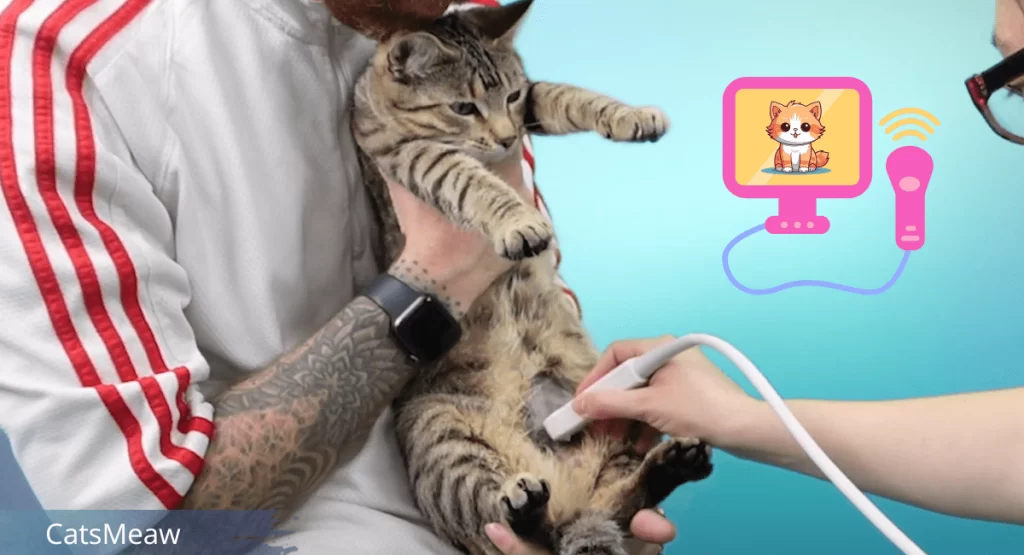Cats have a very high reproductive capacity. In fact, a pair of cats alone can have an offspring of 20,000 individuals in just 4 years. The cat’s heat cycle – mating – gestation – giving birth is very short, and a cat can have up to 4 litters per year, be pregnant from the age of 4 months and give birth to young until the end of his life. In certain specific cases, cat’s Abortion can therefore be an alternative or complementary solution to sterilization of the cat to avoid unwanted litters.
In which case is an abortion to be considered, or even imperative?

Table of Contents
There are many reasons to consider aborting a cat:
- when an intervention intended to sterilize the cat is scheduled, but she mated before the due date;
- an accident with the cat’s contraception: the animal takes contraceptive treatment, but spits out or regurgitates the tablet;
- when the pregnancy of a cat intended for breeding results from an undesirable mating, for example with an unsuitable partner (this is then called a misalliance);
- when a pregnant cat is taken in and she suffers from various pathologies that risk impacting her health and/or that of future kittens.
The process of cat’s abortion
There are several medical solutions for owners wishing to end an unwanted cat pregnancy. Indeed, different protocols are available depending on the expected date of the mating, and the veterinarian will choose the most suitable method based on this. The fact remains that to definitively prevent pregnancy, sterilization remains the safest and least risky option.
If you suspect that your cat is pregnant, your veterinarian may take a blood test or perform an ultrasound examination. Pregnancy can be confirmed approximately 20 to 22 days after the cat has mated. At this point, cat’s abortion can be carried out appropriately. It is important to confirm the pregnancy as early as possible, because if it has lasted for more than 40 days, it is not recommended to terminate it, due to the potential trauma of expelling premature kittens.
The most common medical options for terminating a cat’s pregnancy are ovariohysterectomy, estrogens, and prostaglandins.
On the other hand, there are no effective “homemade” solutions after unwanted mating. For example, douching after sexual intercourse has no effect.
Ovario-hysterectomy
When considering sterilizing the cat, the ideal solution is to carry out an ovario-hysterectomy, i.e. removal of the ovaries and uterus (as well as the elimination of implanted fetuses) during the same procedure. .
For this to be possible, the cat’s pregnancy must be in its first stage.
Estrogens
Estrogen prevents fertilized eggs from migrating and implanting in the uterus. For estrogen to be effective, it must be administered shortly after unwanted reproduction.
Related: Cat Pregnancy: 7 Important Things You Need to Know
However, as 20 days have not yet passed, the cat’s pregnancy cannot be confirmed at this stage. As a result, by giving her this medication, your cat may find herself unnecessarily exposed to dangerous side effects.
These include:
A decrease in bone marrow: This condition results in serious anemia in cats. It can occur within two weeks to two months after drug administration, is generally irreversible, and potentially fatal.
A pyometra: This uterine infection is another possible side effect of estrogen administration. Generally, antibiotics are not enough to effectively treat pyometra, and sterilization is most often necessary.
Infertility: For reasons still unknown, the administration of estrogen can cause temporary infertility in the cat.
Prostaglandins
To maintain the cat’s gestation, the hormone progesterone is necessary. Prostaglandins therefore act by reducing the cat’s progesterone level, which ultimately leads to an interruption of pregnancy.
This medication is to be used after confirmation of pregnancy, but it may happen that it has no effect. Indeed, prostaglandins may fail to terminate gestation, or only terminate part of the litter. An abdominal ultrasound is recommended to confirm complete termination of gestation.
In terms of side effects, this class of drugs is safer than estrogens, and therefore preferred by many veterinarians. The most serious possible side effect following the administration of prostaglandins is the risk of pyometra. In contrast, no cases of infertility associated with prostaglandin administration have been reported.
It is nonetheless strongly recommended that your pet be hospitalized during prostaglandin treatment, which can last four to seven days.
Possible side effects after a cat’s abortion
After a cat’s abortion, whether planned or spontaneous and whatever the method used, side effects may appear. You may also notice vaginal bleeding or abnormal discharge.
It is therefore advisable to carefully observe the cat’s behavior to ensure that such complications do not appear, and to be able to intervene as quickly as possible if this were to be the case.
The Cost of Cat’s Abortion
In USA, it costs between 100 and 200 dollar for a surgical abortion (ovario-hysterectomy) and 50 dollar for a chemical abortion (by administration of estrogens or prostaglandins).
Just as they do not finance the cost of contraception for cats, mutual and animal insurance companies generally do not cover the cost of a cat’s abortion.
How to avoid unwanted cat pregnancies
The best way to prevent unwanted litters is to have the pet spayed or neutered as soon as possible.
Related: Cat Abortion Methods: 5 Safe Practices Explained
If an owner wishes to breed his cat, he must wait for the right moment to ensure that she remains confined during her heat, in order to prevent males from having any access.
Conclusion
Aborting a cat may be necessary in various cases, particularly when she finds herself pregnant before her scheduled sterilization date.
However, this is not a trivial act, and such an intervention should not be taken lightly. Unless you intend to breed your cat, permanent sterilization of the cat is the best way to avoid unwanted litters and having to resort to abortion.
